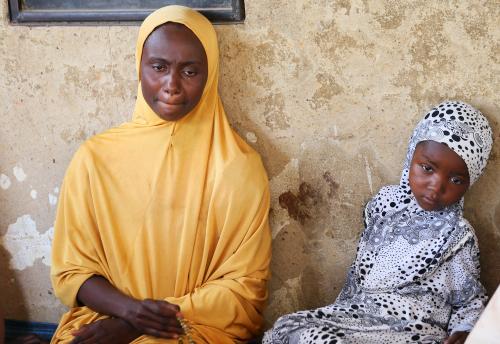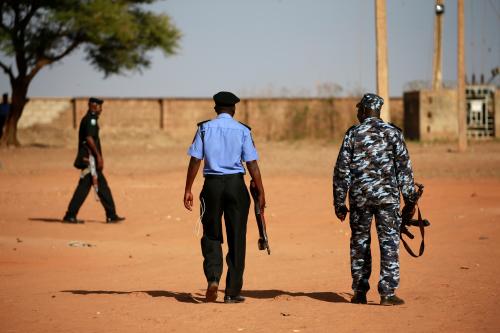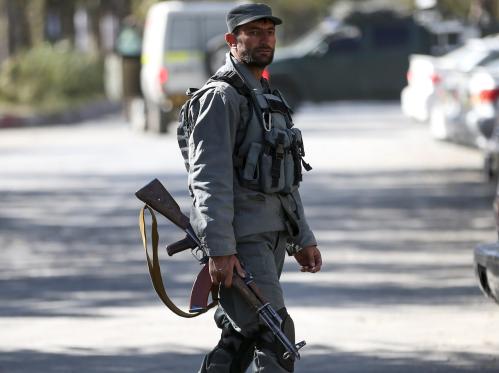Now that the year that brought terrorism to Boston has come to an end, it may be worth asking what the Boston Marathon bombing has meant for terrorism. To put it another way, how have the events of last April 15 changed how we think about contemporary terrorism?
Terrorism is not a static phenomenon. The ethnic and left-wing terrorist movements of the past have largely died out, and the foremost threats of today are groups that employ a religious language and seek maximal carnage rather than smaller, often calibrated acts of violence. Even since the historic attack of 9/11, terrorism has been continually evolving in response to the counterterrorism policies of the United States and other governments and political developments such as the Arab Spring. No one attack could possibly tell us the whole story, but an examination of the Boston Marathon bombings yields some significant insights.
Targeting, Organization, and Scale
Sporting events have been prime targets for terrorist attack since at least the 1972 Munich Olympics, and the recent bombings in Russia have renewed fears over the upcoming Sochi Winter Olympics. With large crowds and lots of press in attendance, such events hold an obvious attraction. It remains a strange footnote that Tamerlan and Dzhokhar Tsarnaev seem to have stumbled upon the Marathon as a target of opportunity when they completed their bomb-making faster than they expected and abandoned a Fourth of July execution date.
More interesting is the Tsarnaevs’ apparent lack of connection with any broader terrorist network. Tamerlan’s six-month sojourn in Dagestan, the center of Islamist extremism in the Russian Caucasus, seems not to have led to any durable ties but rather, as journalistic accounts suggest, a station on his road to violence. Like Nidal Hasan, the Fort Hood shooter who killed 13 and wounded more than 30 in 2009 — and whose attack was the other major post-9/11 domestic incident — the brothers’ chief connection with the wider jihadi world seems to have been their consumption of online materials, especially those of Yemeni cleric Anwar al-Awlaki.
Unlike Hasan, the Tsarnaevs evidently had no direct communication with Awlaki, who was killed in a Sept. 2011 drone strike. But they appear to have been influenced by his writings and his online English-language magazine Inspire, which provided the basic design for their bombs and regularly carried an exhortation for extremists to carry out their own attacks and not wait to join up with a terrorist group.
Although the post-9/11 period has seen remarkably few plots carried out in the United States, it is noteworthy that the two deadliest were at least partially inspired by Awlaki’s online presence. (Hasan experienced the Yemeni cleric personally in 2001 to 2004 when the American-born Awlaki was still preaching at a mosque in northern Virginia before departing for Yemen.) This fact — and the nature of the two incidents — validates US policymakers’ longstanding concern about Awlaki, who managed to translate jihadist propaganda into a hip idiom that appealed to young Western-born Muslims while also helping design plots like the 2009 “underwear bomber” effort to blow up a Northwest Airlines flight to Detroit.
The record also supports President Obama’s claim in May last year that the major terrorist threats the country faces are overseas against diplomatic posts and businesses and in the United States from home-grown extremists, who are unlikely to have the technical skills for massive attacks. In short, the nation’s greatest fear, the threat of a catastrophic attack along the lines of 9/11, has been greatly diminished and replaced at home by local, relatively small scale strikes by isolated individuals or small groups. This is cold comfort for Bostonians who lost loved ones or were grievously wounded in April but a major achievement for US security.
Who Gets Radicalized and How
In the early days after the bombing, many wondered how Dzhokhar Tsarnaev — someone remembered by so many as a good kid, and someone who seemed to be flourishing in America — could have carried out the Marathon attack. The younger Tsarnaev had done well enough at Cambridge Rindge and Latin High School to have won a scholarship in his senior year and been picked to be captain of the wrestling team. The question of the moment seemed to be: How could he be so angry?
The question is misplaced. Plenty of others who seem to have a lot going for them also have turned to violence. Indeed, the benefits of life in the West and the successes Dzhokhar recorded pale compared to those of Ahmed Omar Saeed Sheikh, the Anglo-Pakistani who attended London’s prestigious Forest School — an institution that produced Nasser Hussain, the longtime English cricket captain — and the London School of Economics before participating in the kidnapping and murder of journalist Daniel Pearl.
In light of the Globe’s December magnum opus on “The Fall of the House of Tsarnaev,” Dzhokhar’s achievements look less impressive. Instead, his experience appears more roughly analogous to that of Faisal Shahzad, the Pakistani immigrant with an MBA and job at the Elizabeth Arden cosmetics firm whose marriage faltered, after which he tried to detonate a car bomb in Times Square.
If Shahzad’s experience of family disarray correlates with Dzhokhar’s, his sense that he was professionally blocked has a rough parallel with Tamerlan’s frustration from being disqualified from Golden Gloves boxing. After twice winning the New England championships and apparently investing all his hopes in the sport, seeing his path to success ended by a 2010 rules change that eliminated non-US citizens must have been a searing experience for Tamerlan.
Out of these various setbacks and traumas, the worldview of the brothers Tsarnaev changed. Like many extremists before, they began to interpret their experiences through the lens of a radical Islamist ideology that holds that the West is determined to oppress Muslims, destroy their faith, and occupy their lands. Animated by these beliefs, they were prepared to travel the road to violence.
This analysis is, of course, cursory, and psychologists will need to delve more deeply to understand how the Tsarnaevs wound up as killers. The study of radicalization has intensified since 9/11, though it seems unlikely that we will ever find any unified theory to explain the phenomenon. One of the few hard and fast conclusions is that there are numerous different pathways to violence. Importantly, no theory yet has explained why so many embrace these beliefs but never commit violence — something that might help us prevent more attacks.
In the end, this suggests that the most relevant factor is simple mathematical probability. In a country with tens of millions of immigrants, including many who are Muslim — and therefore the target of jihadist propaganda — some are going to be susceptible because of their life experiences or, given the suggestion that Tamerlan was schizophrenic, mental illness.
Given the size of the population at risk, the number of those who wind up committing violence in the United States has to be judged as very small, and law enforcement disrupts plots regularly. Again, this does little to heal Boston’s wounds. But the main takeaway here is something that sounds trite but is vitally important: A US society that promotes integration and avoids giving fodder to those promoting an extremist worldview continues to be a powerful bulwark against terror — as most Americans have agreed since 9/11.
Terrorism and Random Mass Killing — The Line Gets Blurred
Perhaps the characteristic of the Boston bombings that stands out most is what might be called the lack of a terrorist follow-through. To be sure, the bombings achieved the classic terrorist goal of causing terror, and the manhunt that shut down Boston has few parallels.
But the oddity is that the there was apparently no effort to use the terror to make a point. There was no claim of responsibility, no issuance of a set of demands. Indeed, given the tax day date of execution, many terrorism experts wondered if the events in Boston weren’t carried out by someone more like Timothy McVeigh, the federal government-hating perpetrator of the 1995 Oklahoma City Bombing, than a bin Laden acolyte. Dzhokhar’s note blaming the United States for the wars in Iraq and Afghanistan — scrawled while he hid inside the boat in Watertown — is surely one of the lamer cases of a terrorist seeking to make his grievances known.
Perhaps the brothers planned to make their case later. It seems equally possible, though, that their actions were closer in nature to those of the kind of mass killers that Americans have become all too familiar with — the shooters of Newtown, Aurora, and Columbine, or Muhammad and Malvo, the snipers who terrorized Washington in 2002. In these cases, a welter of motives such as anger and revenge and a desire to leave a mark on history eclipsed any ideological motive. Maybe because the chosen weapons were homemade bombs and not assault weapons, and because of Tamerlan’s trip to Dagestan and growing religious fervor, it has been easy to categorize the Tsarnaevs as terrorists.
But it will not be surprising — especially given the availability of online instructions for bombmaking and the relative simplicity of bomb construction — if we see more cases where the lines are blurred. Some of those who commit atrocities like those mentioned above may find it attractive to make their mark with explosives instead of guns. In addition to the destruction they can achieve, they may seek notoriety for innovation, not to mention the sheen of “political” action. It is hard to predict what the impact for law enforcement or social attitudes will be of the blurring lines between terrorism and other mass killing, but it seems a good, if depressing, bet that the urge to innovate methods of violence is not going to die anytime soon.
Editor’s note: This article was originally published by The Boston Globe.



Commentary
Op-edMotive of Destruction
January 8, 2014